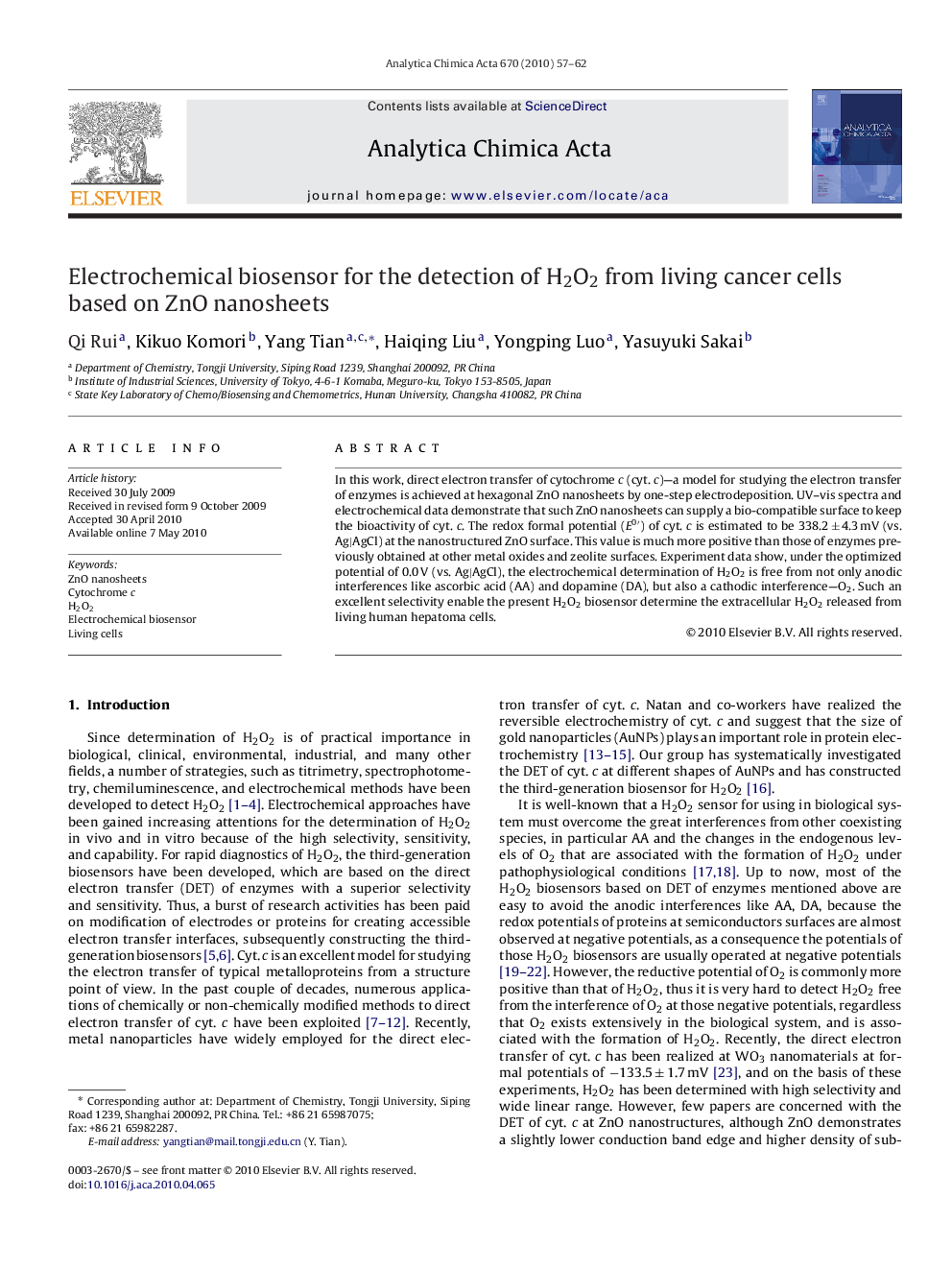| Article ID | Journal | Published Year | Pages | File Type |
|---|---|---|---|---|
| 1167966 | Analytica Chimica Acta | 2010 | 6 Pages |
In this work, direct electron transfer of cytochrome c (cyt. c)—a model for studying the electron transfer of enzymes is achieved at hexagonal ZnO nanosheets by one-step electrodeposition. UV–vis spectra and electrochemical data demonstrate that such ZnO nanosheets can supply a bio-compatible surface to keep the bioactivity of cyt. c. The redox formal potential (E0′) of cyt. c is estimated to be 338.2 ± 4.3 mV (vs. AgǀAgCl) at the nanostructured ZnO surface. This value is much more positive than those of enzymes previously obtained at other metal oxides and zeolite surfaces. Experiment data show, under the optimized potential of 0.0 V (vs. AgǀAgCl), the electrochemical determination of H2O2 is free from not only anodic interferences like ascorbic acid (AA) and dopamine (DA), but also a cathodic interference—O2. Such an excellent selectivity enable the present H2O2 biosensor determine the extracellular H2O2 released from living human hepatoma cells.
